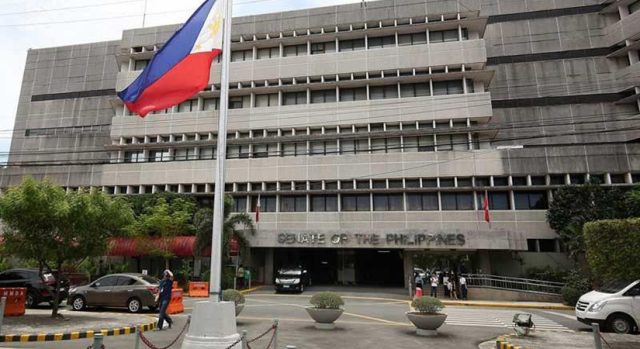THE PHILIPPINES expects to take delivery of more than five million doses of coronavirus vaccines this quarter as it tries to fast-track the rollout amid a fresh surge in infections, according to the government’s vaccine czar.
Half-a-million doses of CoronaVac made by China’s Sinovac Biotech Ltd. was expected to arrive on Thursday, and 15,000 more doses would come on April 25, Carlito G. Galvez, Jr., chief implementer of the country’s pandemic plan, told a televised news briefing on Thursday.
The government would also take delivery of about 500,000 doses of the Sputnik V vaccine made by Russia’s Gamaleya Research Institute for Epidemiology and Microbiology on April 29, he said.
About 195,000 doses of the vaccine developed by Pfizer, Inc. will arrive at the end of the month, Mr. Galvez said.
By May, the country will take delivery of about two million doses of CoronaVac, as many as two million doses of Sputnik V, and 194,000 doses of the vaccine made by Moderna, Inc. As many as two million doses of Pfizer, Inc. will have arrived by then, he said.
The Department of Health (DoH) reported 8,767 coronavirus infections on Thursday, bringing the total to 971,049.
The death toll rose by 105 to 16,370, while recoveries increased by 17,138 to 846,691, it said in a bulletin.
There were 107,988 active cases, 96.6% of which were mild, 1.3% did not show symptoms, 0.7% were critical, 0.9% were severe and 0.55% were moderate.
The DoH on April 2 reported the highest daily tally of 15,310 cases since the pandemic started last year.
The agency said 25 duplicates had been removed from the tally and 43 recovered cases were reclassified as deaths. One laboratory was closed on April 20, while five laboratories failed to submit data.
About 10.6 million Filipinos have been tested for the coronavirus as of April 20, according to DoH’s tracker website.
The coronavirus has sickened about 144.5 million and killed 3.1 million people worldwide, according to the Worldometers website, citing various sources including data from the World Health Organization. About 122.7 million people have recovered, it said.
Mr. Galvez said almost 1.4 million Filipinos have been vaccinated against the coronavirus as of April 21.
Of the total, more than one million were health workers, while 184,200 were seniors. More than 210,880 people with health complications were also vaccinated, he added.
Mr. Galvez said the government had been vaccinating as many 70,000 Filipinos daily in the previous weeks. About 120,000 Filipinos are expected to be inoculated daily by June, he added.
Also on Thursday, testing czar Vivencio B. Dizon said the country’s coronavirus testing laboratories have been conducting at least 55,000 tests daily in the past week. It peaked at 65,000 daily, he told the same briefing.
Mr. Dizon, deputy chief implementer of the country’s pandemic plan, said about 200,000 more antigen test kits had been deployed to Metro Manila and the provinces of Bulacan, Rizal, Laguna, Cavite and Batangas, where there had been a recent surge in infections.
Health facilities have committed to put up 175 more intensive care unit (ICU) beds and 1,000 ward beds for coronavirus patients in these areas.
Presidential spokesman Herminio L. Roque, Jr. said 65% of ICU beds for coronavirus patients in the country have been used. Half of isolation beds have been used and 55% of ward beds were already occupied, he told the briefing.
About 45% of ventilators for coronavirus patients had been used.
Mr. Roque said more than 82% of ICU beds in Metro Manila have been used. He added that about 61% of isolation beds and 70% of ward beds in the region were already occupied. About 60% of ventilators in the capital region have been used.
Meanwhile, Mr. Roque said the Overseas Workers Welfare Administration may run out of funds by mid-May for quarantine facilities of returning Filipino migrant workers. The agency only has about P1.4 billion left in its budget.
Mr. Dizon said the government spends about P4.5 million daily to quarantine migrant workers. — Kyle Aristophere T. Atienza and Vann Marlo M. Villegas




















